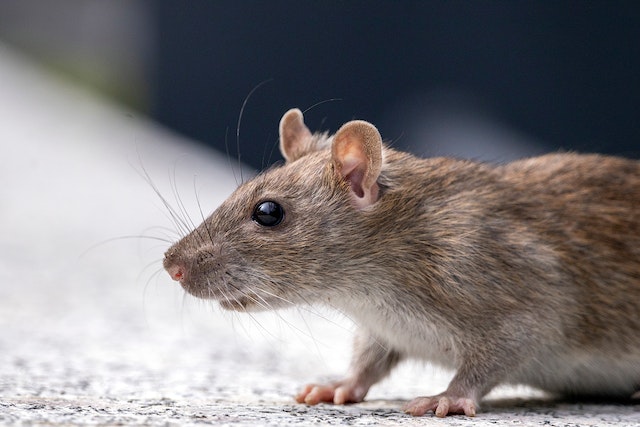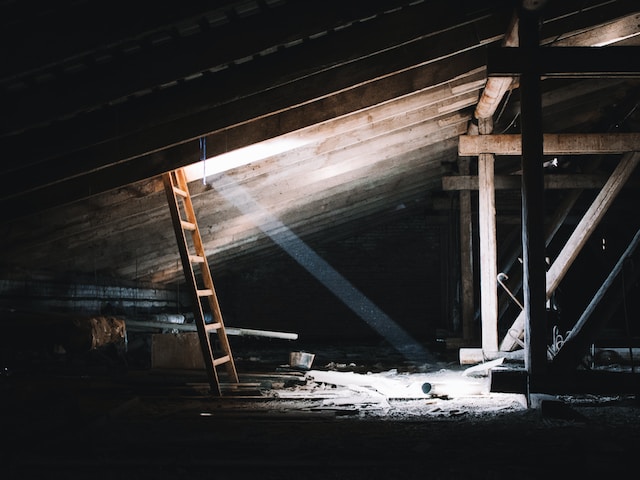Discovering unwelcome guests scurrying around your attic is enough to send shivers down anyone’s spine. Attic rats are notorious for causing havoc in our homes.
In this blog, we’ll illuminate these elusive rodents, exploring their behavior, habits, and potential risks to our living spaces. Whether you’re dealing with an existing infestation or looking to prevent one, join us as we navigate the world of attic rats and uncover the key steps to ensure your home remains rat-free.
What Rats Infest Attics?
Roof rats are slender, agile rodents with a distinctive appearance. They have pointed snouts, large ears, black or brown fur, and long, scaly tails longer than their bodies. Typically, roof rats measure 6 to 8 inches long, excluding their tails, which can add 7 to 10 inches.
Attics provide an ideal environment for roof rats, offering shelter, warmth, and protection, catering to their secluded nature.
Roof rats are excellent climbers who can easily access roofs through tree branches, utility lines, and other structures. From there, they locate small openings or gaps in the building’s exterior and enter the attic.
However, attic rats aren’t the only rat species you may find indoors. Norway rats are another species that habitually invade homes around the country. But, unlike roof rats, Norway rats are less likely to infest attics than roof rats. There are a few reasons for this:

Climbing Ability: Norway rats are less adept at climbing than roof rats. While they can somewhat climb vertical surfaces, roof rats are more agile and proficient in scaling trees, utility lines, and elevated areas.
Burrowing Behavior: Norway rats are excellent burrowers and prefer nesting in underground areas such as holes, crawl spaces, basements, and sewers. They are naturally inclined to create extensive tunnel systems in soil or other underground environments. These behaviors make attics less attractive to Norway rats, as they prefer closer proximity to the ground.
Habitat Preference: Norway rats prefer environments with abundant food sources and moisture. They are more likely to infest areas near food storage, garbage disposal, or locations with water sources like sewers or drainage systems.
While Norway rats may sometimes venture into attics, this isn’t common. Because they prefer lower areas and have limited climbing abilities, attic infestations by Norway rats are comparatively unusual, and any rat activity probably results from roof rats.
Signs You Have Attic Rats
Noticing rats in your attic isn’t rocket science – you just need to watch for a few clear signals that these annoying rodents have made themselves at home above your living space.

- Gnaw Marks: Rats constantly need to gnaw on objects to keep their teeth from growing too long. Look for gnaw marks on your attic’s wooden beams, insulation, electrical wiring, pipes, or stored items. Fresh gnaw marks will appear lighter in color, while older ones may be darker or have rough edges.
- Droppings: Roof rat droppings are typically 1/2 to 3/4 inch long, thin, and pointed at both ends. Norway rat droppings are larger, about 3/4 to 1 inch long, and have blunt ends. Look for these droppings along attic floors, beams, near nesting areas, or on stored items.
- Grease Marks: Rats have oily fur that leaves smudge or grease marks along walls, beams, or other surfaces they frequently travel along. These marks may appear as dark streaks or stains and indicate common pathways rats use in your attic.
- Footprints or Tracks: In dusty areas of your attic, you may notice footprints or tracks left behind by rats. These tracks can be visible on surfaces like insulation or dust-covered floors. Rat footprints generally show four or five toes and may have tail drag marks.
- Nests: Rats create nests in secluded areas of your attic. Look for nests filled with shredded insulation, paper, fabric, or plant matter in hidden corners, wall voids, or insulation.
- Strange Noises: Rats are active primarily during the night. You may have attic rats if you hear scratching, scurrying, or squeaking sounds from your attic.
- Damage to Insulation or Wiring: Rats may damage insulation by shredding it for nesting materials or urinating on it. They can also chew through electrical wiring, which poses a significant fire hazard. Look for signs of insulation disturbance, exposed wires, or electrical issues caused by rat activity.
- Odor: A strong, musty odor in your attic could indicate a rat infestation. Rat urine and droppings can emit an unpleasant smell in confined spaces like attics.
If you notice any of these signs, it is crucial to take action promptly. Contacting a professional pest control service will help you accurately identify the extent of the infestation and implement effective control measures to eliminate attic rats.
Problems Caused by Attic Rats
Having rats in your attic poses dangers and risks that you should address promptly. These pesky rodents can cause extensive damage to your property and pose significant health hazards.
Rats are notorious chewers whose sharp incisors can gnaw through various materials. When rats infest your attic, they may chew on insulation, wood beams, electrical wiring, and stored items.
Plus, rats may use attic insulation for nesting, tearing it apart and reducing its effectiveness. This compromises your home’s energy efficiency and insulation capabilities, resulting in potential heat loss during the colder months. And unfortunately, some homeowner’s insurance providers won’t cover rodent damage in their policies.
Beyond just causing damage to your property, rat infestations bring along serious health risks. These rodents are well-known carriers of various diseases, capable of transmitting them to humans through direct contact with urine, droppings, or bites.
The consequences of these illnesses are no joke – they can lead to severe symptoms and complications. Additionally, rats can introduce unwelcome parasites such as fleas, ticks, and mites into your living space, escalating the potential health hazards for you and your family.
Moreover, the issue of contamination comes into play with rat infestations. Left behind are traces of rat urine, droppings, and hair, which can taint the attic environment.
These contaminants affect indoor air quality and pose an exceptionally high risk to respiratory health, especially for those with allergies or pre-existing respiratory conditions. The strong and pungent odor emanating from rat urine and droppings can permeate your home, creating an unpleasant atmosphere.
But the problems don’t end there. Attic rats’ gnawing tendencies also lead to electrical hazards. Their habit of chewing on electrical wires can expose them, leading to short circuits, electrical malfunctions, and potential fire risks.
This sort of damage disrupts the functioning of your electrical system and significantly raises the chances of electrical fires occurring. Such risks jeopardize your home and your family’s safety, potentially causing power outages and harm.
Taking care of an attic rat infestation is vital to counter these risks. It’s wise to reach out to professional pest control for help. These experts come armed with the know-how, experience, and specialized tools needed to effectively eliminate rats, mend any damage incurred, and put preventive measures in place to stop future infestations.
Shield your home from these stealthy trespassers above – get in touch with proof. Pest Control today for top-notch attic rat removal and prevention services. Don’t let attic rats commandeer your space; trust our skilled team to kick them out for good and ensure your home remains rodent-free!

